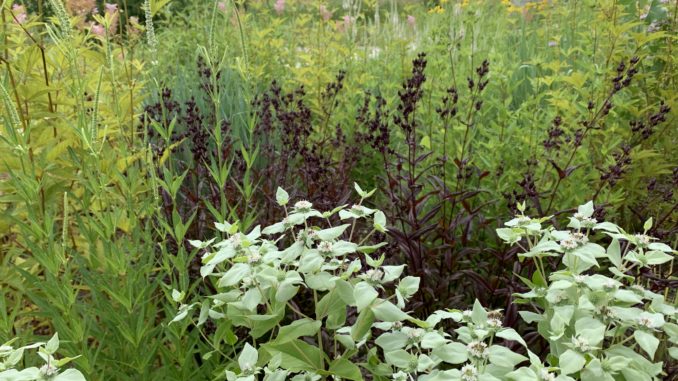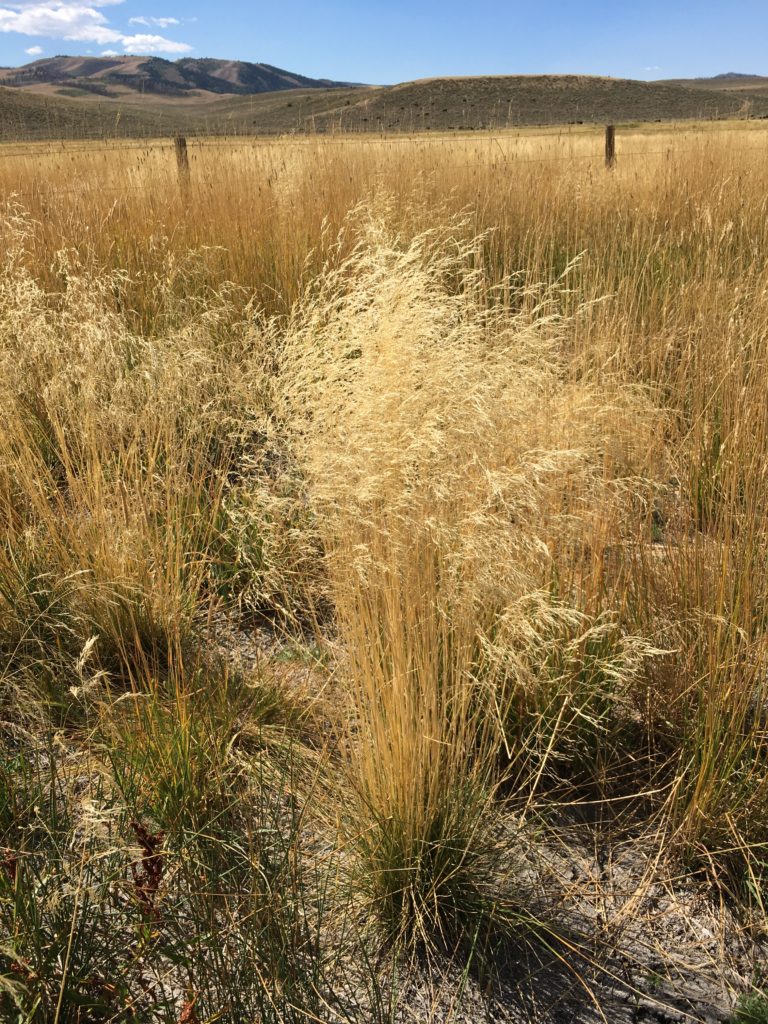

Bryan Fischer, Horticulturist, Gardens on Spring Creek
When I took the reins of the Prairie Garden at the Gardens on Spring Creek – at that time, a half-acre of bare dirt in the newly constructed expansion – I found myself surprised to know so little about plants appropriate for the space. As Coloradoans, we tend to be familiar with species from our mountain regions but seem to pay less attention to those from our downhill side. I’ve learned extensively about the prairie ecosystem and associated plant palette in my years curating the garden, especially how many showy prairie natives excel here on the Front Range. This article is the first of a two-part series designed to introduce less-commonly known prairie natives, selected for their adaptability to our soils and climate, as well as their season-long appeal.
More than just a novelty, Echinacea paradoxa (Yellow, Ozark or Bush’s coneflower) is a fascinating yellow flowering relative of the common purple coneflower. Though adapted to grassland glades in the Ozarks, E. paradoxa has excelled on our site, producing a flurry of yellow, shuttlecock shaped blooms on three-foot-tall stems in early July – slightly earlier than the common purple coneflower. Leaves are rounded into elongated teardrops, largely arising from the base, keeping a clean look.

Many of us have grown penstemon, wowed by their spectacular floral displays, only to find them fail after succumbing to rot (they’re adapted to drier sites in the west) or tire themselves out with heavy blooms and seed sets. Fortunately, “penstemaniacs” aren’t out of luck; they can look to Penstemon digitalis, or foxglove penstemon. Increased moisture tolerance and a more measured rate of bloom give this species far better-staying power, and foxglove penstemon is also a bit more substantial in stature than our local species. In my gardens, they typically reach three feet high and one to two feet wide, producing white or soft-purple blooms well above the foliage, which can be green or deep purple, as is the case with ‘Dark Towers’ and ‘Husker Red’.
While the blooms of these aforementioned prairie selections are definitely a favorite, grasses provide variations in texture, form, and color that few perennials can match and are largely unaffected by erratic weather – including hail. Descampsia cespitosa is a cool season grass, completing its reproductive cycle before the summer heat. I particularly enjoy taking advantage of this trait by using Descampsia to break upstands of perennials, where it provides a see-through, buff-colored screen. Its gentle movement and vase-shaped quality keep such spaces elegant and mitigate the dreaded “green blob” effect.
Consider replacing a tired perennial or filling a bare spot with one of the underused performers from above. For plants that peak later in the growing season (after July 15), don’t miss the second part of this feature in the North Forty Gardener.
Support Northern Colorado Journalism
Show your support for North Forty News by helping us produce more content. It's a kind and simple gesture that will help us continue to bring more content to you.
BONUS - Donors get a link in their receipt to sign up for our once-per-week instant text messaging alert. Get your e-copy of North Forty News the moment it is released!
Click to Donate
